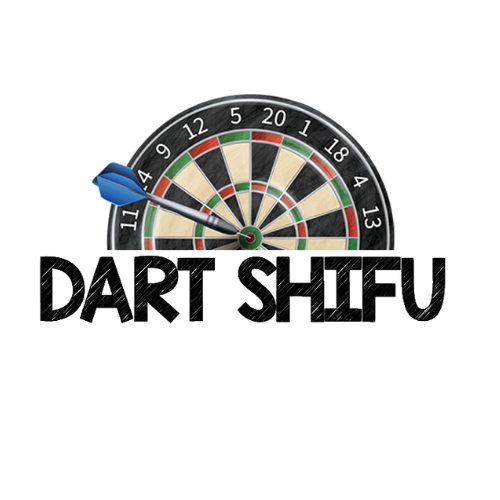In darts, a bullseye is worth 50 points. It is the highest-scoring area on the board.
For players of all skill levels, darts is a popular and engaging pastime. Whether enjoyed at home or in a pub setting, the game offers a blend of relaxation and competition. Known for its simple and straightforward rules, the game involves throwing small missiles, or darts, at a circular target, with the goal of accumulating points.
The bullseye is a small red circle located at the center of the board, and it is the highest-scoring area, worth 50 points. Players must demonstrate precision and accuracy to hit this coveted spot, making it a thrilling and challenging aspect of the game. Whether played for fun or in organized tournaments, the bullseye remains a key focal point in the game of darts.

Credit: darthelp.com
The Basics Of Darts Scoring
Darts is a popular game that requires both skill and precision. One of the fundamental aspects of playing darts is understanding the scoring system. Different types of dart boards, the dart board scoring system, and the impact of dart board construction on scoring all contribute to the overall gameplay. Let’s delve into these aspects to gain a better understanding of darts scoring.
Different Types Of Dart Board
When it comes to dart boards, there are primarily two types – the traditional bristle dart board and the electronic dart board. The traditional bristle board, often made from sisal fibers, is the standard choice for both casual and professional players. On the other hand, electronic dart boards are equipped with automated scoring systems and numerous built-in games, making them a popular choice for casual players and electronic gaming enthusiasts.
Understanding The Dart Board Scoring System
The dart board scoring system is based on the different sections of the dart board. Each section has its own point value, and players aim to accumulate points by strategically targeting specific areas of the board. The standard dart board is divided into 20 numbered sections, with the outer ring providing double the points and the inner ring offering triple the points. The bullseye is the ultimate target, comprising the outer bull and the inner bull, each with its own point value.
Impact Of Dart Board Construction On Scoring
The construction of the dart board has a significant impact on scoring. Bristle boards, known for their self-healing properties, allow darts to penetrate the surface, reducing bounce-outs and ensuring accurate scoring. Electronic dart boards, while convenient in terms of automated scoring, may vary in sensitivity, affecting the accuracy of score tracking. Additionally, the wiring system and segmentation of the scoring areas differ between dart board types, influencing the overall gameplay experience.
Analyzing The Bullseye In Darts
The bullseye in darts is the center of the dartboard, typically divided into two sections: the inner bullseye and the outer bullseye. The inner bullseye, also known as the “double bull,” is worth more points than the outer bullseye. In standard game rules, the inner bullseye is worth 50 points, while the outer bullseye is worth 25 points. These high-scoring segments require precision and skill to hit, making them highly coveted targets for darts players.
Historically, the bullseye has been a pivotal aspect of darts, dating back to its origins as a game of skill and accuracy. The scoring system for the bullseye has evolved over time, with early iterations attributing different point values to the center of the dartboard. The consensus on the modern standard of 50 points for the inner bullseye and 25 points for the outer bullseye has solidified the importance of these scoring areas in the game of darts.
While the standard point values for the bullseye remain consistent across most dartboards, variations in dartboard types may yield slight differences in the size and placement of the bullseye. It is essential for darts enthusiasts to familiarize themselves with the specific measurements of the bullseye on different dartboard models to optimize their gameplay and scoring strategies. Understanding these variations can enhance decision-making and precision when aiming for the bullseye.
Bullseye Worth In Different Dart Games
Understanding the scoring of the bullseye in darts is crucial for players to strategize effectively and optimize their game outcomes. The worth of the bullseye varies in different dart games, influencing players’ tactics and approach. Let’s delve into the significance of the bullseye worth in various traditional and modern dart game formats, as well as its value in professional dart competitions.
Traditional Game Variations And Bullseye Points
In traditional dart game variations such as 301 and 501, the bullseye holds a distinct point value. The inner bullseye, also known as the double bull, is typically worth 50 points. This high point value often leads players to target the bullseye to secure a substantial score and gain an advantage over their opponents.
Modern Dart Game Formats And Bullseye Scoring
Modern dart game formats, including Cricket and Tactics, also incorporate the bullseye as a significant scoring area. In these games, the bullseye exists as a strategic focal point, with the outer bullseye (single bull) typically worth 25 points. Players strategically utilize the bullseye to accumulate points while strategically blocking their opponents from doing the same.
Value Of Bullseye In Professional Dart Competitions
Professional dart competitions showcase the immense value of hitting the bullseye. In these high-stakes tournaments, the bullseye holds substantial point significance, often serving as a pivotal factor in deciding match outcomes. Players’ proficiency in consistently hitting the bullseye largely influences their standings in professional competitions, emphasizing the critical role of bullseye accuracy and point accumulation.
Strategy And Techniques For Hitting The Bullseye
When it comes to darts, hitting the bullseye is the ultimate goal for players seeking to outscore their opponents. In the game of darts, the bullseye is considered the most valuable target on the board, and mastering the strategy and techniques for hitting it can significantly elevate a player’s performance. In this blog post, we will explore the various aspects of hitting the bullseye in darts, including mastering aim and precision, improving accuracy through techniques, and psychological considerations for achieving this coveted goal.
Mastering Aim And Precision
Mastering aim and precision is essential for hitting the bullseye in darts. Achieving consistency in aim requires a combination of proper stance, grip, and focus. Players should ensure they have a steady stance, a firm grip on the dart, and maintain a consistent eye level while aiming for the bullseye. Additionally, refining the release technique and following through with the throw can greatly enhance a player’s precision.
Improving Accuracy Through Techniques
To improve accuracy in hitting the bullseye, darts players can employ various techniques. One effective method is to focus on the line of sight and align it with the target, ensuring that the dart is released along this visual path. Another technique involves adjusting the force and angle of the throw to account for the distance to the bullseye. Through consistent practice and experimentation, players can develop their own personalized techniques to enhance their accuracy.
Psychological Considerations For Hitting The Bullseye
Hitting the bullseye in darts also involves psychological considerations. Maintaining a confident and focused mindset is crucial, as self-doubt or distractions can impede a player’s ability to hit the target. Visualizing the successful execution of the throw and maintaining a positive mental attitude can significantly impact a player’s ability to consistently hit the bullseye.
Bullseye Scoring And Equipment
In the game of darts, achieving a bullseye is a pivotal moment that requires precision, focus, and the right equipment. Bullseye scoring and equipment play a crucial role in determining the outcome of a darts match. Let’s delve into the impact of dart type on bullseye scoring, the maintenance and care of dart boards for accurate scoring, and best practices for recording bullseye points.
Impact Of Dart Type On Bullseye Scoring
The type of dart used can greatly influence bullseye scoring. Tungsten darts, due to their higher density, provide better accuracy and reduce the chances of deflection. The slimmer profile of tungsten darts facilitates tighter groupings, increasing the likelihood of hitting the bullseye. On the other hand, brass darts may be less forgiving due to their lower density and larger diameter. The softer nature of brass could lead to more bounce-outs and a lower bullseye scoring percentage.
Maintenance And Care Of Dart Board For Accurate Scoring
The condition of the dart board directly impacts the accuracy of bullseye scoring. Regular maintenance, such as rotating the dart board to even out wear and tear, ensures a consistent playing surface. Keeping the board clean from dust and dart residue prevents errant bounces and promotes accurate scoring. Sharpening the wire edges and checking for board thickness are also vital to minimize the chances of darts rebounding off the wires and affecting bullseye scoring accuracy.
Best Practices For Recording Bullseye Points
When recording bullseye points, it is essential to do so accurately and efficiently. Using a dedicated scoreboard and having a clear understanding of the scoring system is paramount. An organized and systematic approach to tracking bullseye points not only enhances the game experience but also allows players to analyze their performance and make strategic adjustments. Duelling with pen and paper, electronic scoreboards, or dedicated scoring apps are popular methods for accurate and reliable bullseye point recording.
Frequently Asked Questions On How Many Points Is A Bullseye In Darts Worth
What Are The Scoring Areas On A Dartboard?
The scoring areas on a standard dartboard include single, double, and treble sections, as well as the bullseye. Each section has different point values, adding an element of strategy and precision to the game.
What Is The Point Value Of Hitting The Outer Bullseye?
Hitting the outer bullseye, also known as the “bull,” awards 25 points. This smaller red circle located just outside the bullseye is a valuable target for players aiming to accumulate points in dart games.
How Many Points Is The Bullseye In Darts Worth?
The bullseye is the central target on the dartboard and is divided into two parts – the inner and outer bullseye. The inner bullseye is worth 50 points, while the outer bullseye is worth 25 points. Attaining this target requires precision and skill.
Conclusion
Knowing the value of a bullseye in darts can significantly impact your game. Understanding the scoring system can enhance your strategy and skill. Whether you’re playing for fun or competition, grasping the worth of a bullseye is essential for achieving success in the game of darts.



